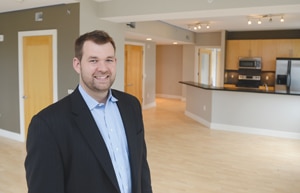A taxing predicament: City Council tinkers with abatement

PERRY BEEMAN Sep 14, 2015 | 8:34 pm
3 min read time
737 wordsAll Latest News, Government Policy and Law, Real Estate and Development|
The Des Moines City Council at a workshop this morning moved to tinker with a possible new housing tax abatement program before a planned Oct. 26 vote on an issue that has council members under pressure from neighborhood groups, developers and others.
Along the way, the city staff suggested a change that would allow developers to qualify for the present abatement program if they submit plans to the city for their buildings and sites before Jan. 1. That will guard against developers losing the break due to a backlog of projects coming in the weeks before the program expires.
Kris Saddoris, vice president for development at Hubbell Realty Co., said that assurance is important “for those of us who are swinging cranes downtown,” noting that Hubbell is arranging financing for some projects that would qualify.
Previously, the city had said a developer would have to get a building permit and start construction in 2015 to qualify for the present set of tax abatements.
In a broader abatement discussion, which lasted more than an hour, various council members suggested ideas that included extending the present program, waiting to take any action until the planDSM comprehensive plan is finished, and tinkering with staff recommendations. The city staff said its latest proposal would offer tax abatement for rowhomes of eight units or less if they have their own lot and meet design guidelines.
No votes were taken.
The upshot: The city staff will look at the numbers again, with careful attention to a plan offered by Councilman Chris Coleman that was in the vein of a “meet them halfway” approach that often surfaces in city government proposals.
The city’s program varies depending on the type of housing and its location. At this point, there is a citywide five-year tax abatement for single-family residences of 100 percent. Those breaks will disappear in 2016 without council action.
The city has been mulling changes for months. The city staff had suggested a sliding five-year scale of decreasing breaks that would amount to a 60 percent savings on property taxes, but would provide the city with much-needed cash.
Coleman suggested a more developer-friendly sliding scale that would result in 80 percent savings on taxes.
He also made it clear he won’t vote for an extension of the current program, because many taxpayers are weary of subsidizing various developments and some think apartments have flooded some areas while others need more. “I am going to vote for some change,” Coleman said. “We need to give the neighborhoods back to the neighborhoods.”
Both Mayor Frank Cownie and Councilwoman Christine Hensley said the city would do well to decide its long-range direction through the planDSM work and other means before deciding what to do long term.
But Hensley also said homeowners and developers now are stuck wondering whether to buy land for construction next year, not knowing what the rules are.
“I believe there needs to be changes,” she said. “There are some things that have gotten out of balance.”
“I agree that we need to make a decision as soon as possible because it has put us in a very awkward and uncomfortable position with developers,” Hensley said.
She added: “Once you stop that economic engine, it takes a long time to get it going again. People have choices.”
Council members also discussed changing the area eligible for tax abatements on multifamily developments. One idea discussed would shrink the main area that has qualified for the breaks, but also add the abatement to key corridors where the city wants to encouraging dense housing near bus routes.
Coleman said the city should offer tax abatement for rehabilitation of multifamily housing citywide, an idea that seemed to gain interest among several council members.
Read the city staff’s presentation from this morning’s meeting.
|
|













